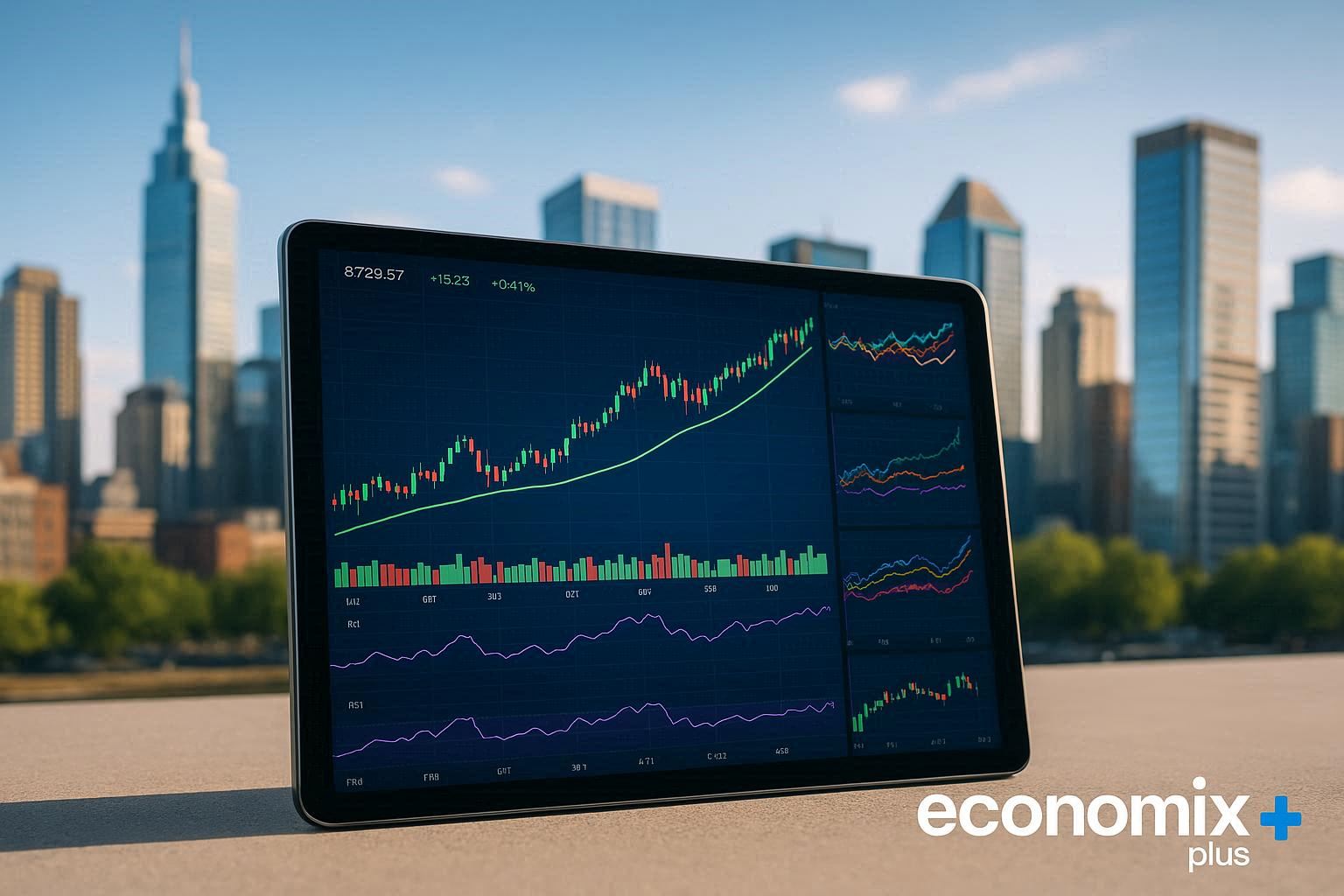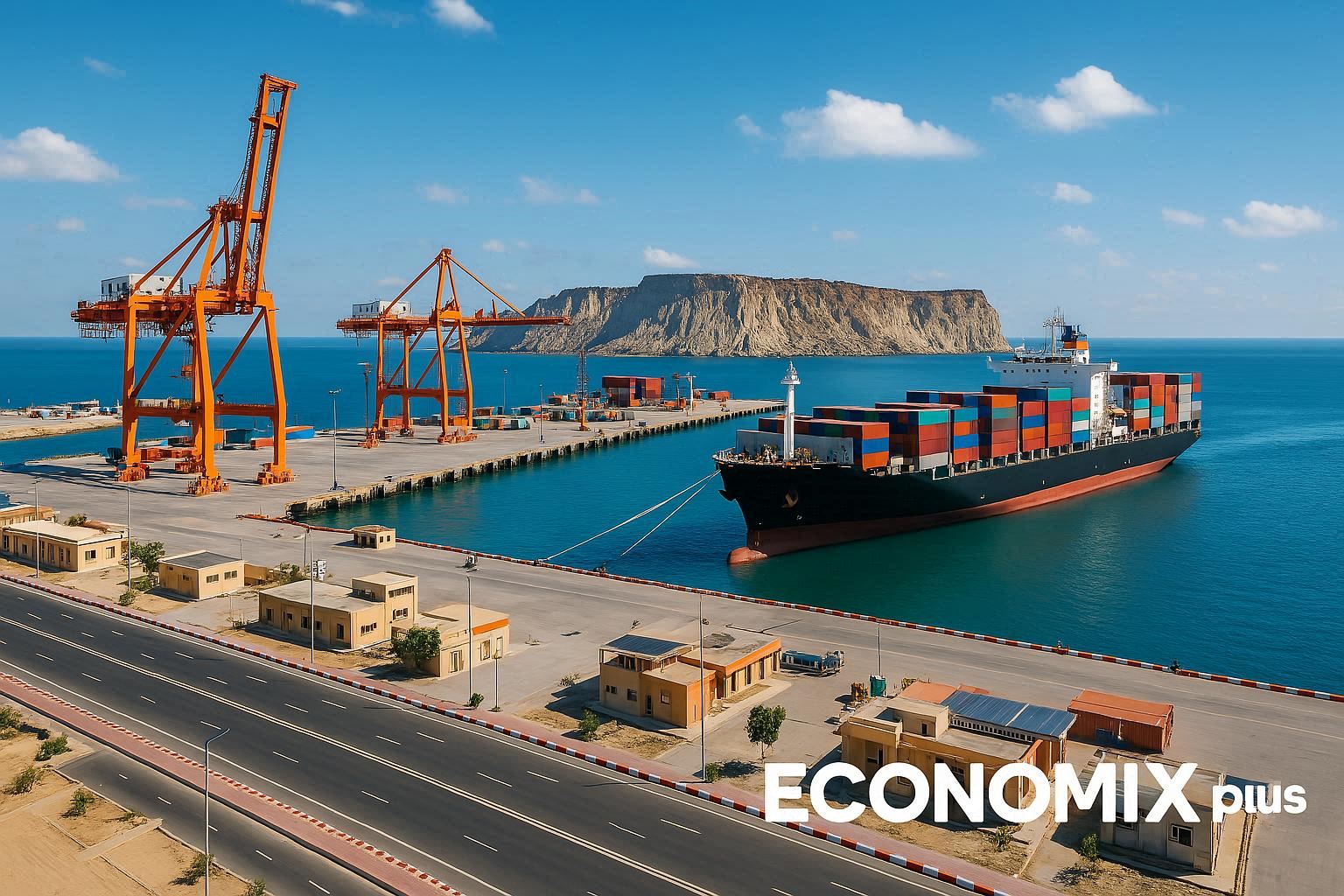How do global investors decide where to allocate billions of dollars in capital? The answer often lies in sovereign risk assessments—grades assigned by agencies that shape financial decisions worldwide. These evaluations don’t just reflect a country’s fiscal health; they influence where businesses build factories, how governments secure funding, and why economies thrive or stagnate.
Nations with higher scores attract more international capital, fueling infrastructure projects and job creation. For example, Mexico’s recent reforms improved its standing, drawing record-breaking inflows despite global uncertainty. Conversely, downgrades can trigger rapid outflows, destabilizing markets overnight.
This dynamic isn’t limited to emerging economies. Even developed countries face pressure to maintain favorable evaluations. The interplay between these grades and cross-border investments reveals patterns shaping everything from trade agreements to technological innovation.
Key Takeaways
- Sovereign risk grades heavily influence where multinational companies invest.
- Higher ratings correlate with increased infrastructure development and employment.
- Recent data shows emerging markets using policy reforms to boost their global standing.
- Mexico’s economic strategy demonstrates how targeted changes attract capital inflows.
- Rating shifts can cause immediate reactions in currency values and stock markets.
Introduction to Global Investment and Credit Ratings
Why do certain nations consistently attract large-scale international business ventures? Cross-border capital flows reached $1.3 trillion in 2023, with over 40% directed toward emerging markets. This surge reflects a growing confidence in these economies, driven by their potential for growth and development. The United States remains the top destination, accounting for 22% of global inflows last year, thanks to its robust infrastructure, skilled workforce, and stable regulatory environment.
Economic evaluations by agencies act as gatekeepers for capital access. Countries with stronger sovereign grades typically secure lower borrowing costs, attracting manufacturing plants and tech hubs. Mexico’s $32 billion in foreign direct inflows during 2022—a 12% increase from 2021—showcases how policy reforms can enhance market confidence.
Bilateral partnerships heavily influence these trends. Recent agreements between the U.S. and Mexico have streamlined supply chains, boosting automotive and energy sector investments. Such collaborations demonstrate how strategic alignment between nations shapes economic outcomes.
These dynamics set the stage for deeper analysis of risk assessment models and their impact on job creation. Subsequent sections will explore how institutional frameworks and liquidity metrics determine long-term growth trajectories.
Understanding Credit Ratings
Financial institutions rely on standardized evaluations to gauge economic reliability. These assessments act as report cards for nations, signaling their ability to meet obligations. They play a crucial role in attracting foreign investment, as higher ratings often correlate with lower borrowing costs and increased investor confidence.
Three major agencies—S&P Global, Moody’s, and Fitch—dominate this space with proprietary grading systems. These agencies utilize extensive data analysis and economic indicators to determine ratings, which can significantly impact a country’s financial landscape and its ability to engage in international trade and investment.
What is particularly noteworthy is that these ratings are not static; they can change based on a variety of factors, including economic performance, political stability, and external shocks. Investors closely monitor these ratings, as they provide insight into the risk associated with investing in a particular country. Moreover, a country’s credit rating can influence its currency strength and overall economic health, making it a critical element in global finance.
Are Credit Ratings?
A sovereign grade measures default risk using letter codes from AAA (low risk) to D (default). For instance, Germany holds AAAratings due to robust industrial output and stable governance, which are crucial for maintaining investor confidence. This high rating allows Germany to borrow at lower interest rates, thereby reducing the cost of financing public projects and stimulating economic growth.
Conversely, Argentina’s recent downgrade to CCC- reflects chronic inflation and political turbulence, which have undermined its economic stability and investor trust. Such downgrades can lead to increased borrowing costs and reduced access to international capital markets, further exacerbating a country’s financial challenges. Other nations, like Turkey, have also faced similar pressures, with fluctuating ratings highlighting the impact of geopolitical tensions and economic mismanagement on their financial health.
Key Factors That Influence Grades
Analysts prioritize four elements when evaluating nations:
- GDP growth consistency
- Debt-to-GDP ratios
- Policy effectiveness
- External trade balances
The European Union exemplifies collaborative fiscal management. Joint monetary policies help members like Spain maintain BBB+ ratings despite regional disparities. Emerging markets often face harsher scrutiny—Pakistan’s B- grade stems from energy shortages and tax collection gaps.
| Factor | Advanced Economies | Emerging Markets |
|---|---|---|
| Economic Diversity | High (e.g., France) | Moderate (e.g., Vietnam) |
| Political Stability | Established systems | Frequent transitions |
| Debt Management | Low-interest bonds | Currency swaps |
These evaluations shape investment patterns globally. Multinational corporations reference them when choosing factory locations or tech hubs. A single upgrade can unlock billions in infrastructure financing for developing countries.
The Importance of Economic Fundamentals
Economic resilience in a global market hinges on core financial pillars. Strong fundamentals act as magnets for investors, shaping where capital flows and how nations compete. Investors are increasingly looking for stable environments where their capital can thrive, and economic indicators such as GDP growth, inflation rates, and fiscal policies play a crucial role in their decision-making processes.
Mexico’s 3.1% GDP growth in 2022—outpacing regional averages—demonstrates this principle in action. This growth not only reflects Mexico’s effective economic strategies but also positions it as a favorable destination for foreign direct investment, which can lead to job creation and technological advancements in various sectors.

Macroeconomic Stability
Consistent growth and controlled inflation signal reliability. The International Monetary Fund reports economies with inflation below 4% attract 23% more cross-border capital annually. Mexico’s central bank achieved this through targeted interest rate adjustments, stabilizing prices despite global supply chain disruptions.
Fiscal discipline also matters. Countries maintaining budget deficits under 3% of GDP see stronger currency valuations. This creates favorable conditions for trade partnerships and manufacturing expansions.
Debt Management Strategies
Balancing obligations requires precision. Nations like Mexico reduced debt-to-GDP ratios from 60% to 54% through:
- Debt restructuring programs
- Transparent fiscal reporting
- Strategic reserve buffers
These measures build investor trust during economic turbulence. As one analyst notes:
“Markets reward governments that treat debt as a tool, not a crutch.”
Recent data shows emerging markets using such approaches to secure better financing terms. This alignment between policy and practicality drives sustainable growth in competitive sectors.
Assessing Sovereign Risk in International Markets
What separates stable economies from those vulnerable to global shocks? Sovereign risk hinges on two critical factors: how swiftly institutions adapt to crises and whether reserves can cover sudden financial demands. The ability of a nation to respond quickly to unforeseen economic challenges is essential; this includes having robust emergency protocols and efficient decision-making processes in place. Additionally, the strength and size of a country’s reserves play a pivotal role in determining its financial stability.
These elements determine which countries attract multinational companies and sustain growth during turbulence. For instance, nations with strong institutional frameworks can implement policies that not only stabilize their economies but also encourage foreign investment, creating a virtuous cycle of growth and resilience. Conversely, those lacking such frameworks may struggle to maintain investor confidence, particularly in times of crisis.

Institutional Responsiveness
Governments that rapidly address fiscal gaps retain market confidence. Poland’s 2023 tax code overhaul reduced bureaucratic delays by 40%, drawing tech companies to its manufacturing sector. Conversely, South Africa’s delayed energy reforms contributed to power shortages, eroding investor trust.
External Liquidity Analysis
Nations with liquid reserves exceeding short-term debt obligations weather currency fluctuations better. Brazil holds $325 billion in foreign reserves—enough to cover 18 months of imports. Japan’s $1.3 trillion liquidity cushion supports its AAA standing despite high public debt.
A recent World Bank study highlights key contrasts:
| Country | Reserves/Debt Ratio | Policy Response Time |
|---|---|---|
| Mexico | 1.8x | 3 months |
| Turkey | 0.9x | 8 months |
“Liquidity isn’t just about cash reserves—it’s about demonstrating the capacity to act when markets shift.”
Emerging markets like India now prioritize real-time data systems to monitor sector vulnerabilities. This approach helps countries align fiscal strategies with global investor expectations, creating safer environments for long-term capital flows.
Outlook on Foreign Direct Investment Trends
Global capital movements are undergoing seismic shifts as emerging markets deploy targeted reforms aimed at attracting foreign investment. The Bureau of Economic Analysis reports a 14% year-over-year increase in cross-border commitments, reaching $1.8 trillion in early 2024. This surge reflects changing priorities among multinational firms seeking resilient growth markets, particularly in regions that are actively enhancing their regulatory frameworks and infrastructure.
Companies are increasingly drawn to nations that not only promise stable economic environments but also demonstrate a commitment to innovation and sustainability. As a result, emerging markets are strategically positioning themselves to meet the evolving demands of global investors, ensuring that they remain competitive in a rapidly changing landscape.

Key Market Drivers
Digital infrastructure readiness tops decision-making criteria, with 68% of firms prioritizing nations offering 5G networks and AI governance frameworks, as these technological advancements are essential for facilitating efficient operations and enhancing connectivity. The rapid adoption of digital tools not only streamlines business processes but also fosters innovation, making countries with robust digital infrastructures more attractive to investors.
Second, manageable sovereign debt levels below 65% of GDP attract long-term manufacturing projects, as lower debt ratios signal economic stability and fiscal responsibility, which are crucial for sustaining growth over time.
Third, renewable energy partnerships now influence 42% of capital allocation decisions in heavy industries, reflecting a growing recognition of the importance of sustainability. Companies are increasingly seeking to align their investments with environmental goals, leading to a surge in projects that focus on clean energy sources and sustainable practices, thereby ensuring long-term viability and compliance with global standards.
Investment Flow Data Insights
Asia-Pacific regions captured 53% of recent commitments, driven by Vietnam’s semiconductor plants and India’s tech corridor developments. Contrasting patterns emerge when analyzing debt ratios against capital inflows:
| Region | 2024 FDI Growth | Average Debt/GDP |
|---|---|---|
| Southeast Asia | 19% | 58% |
| Eastern Europe | 8% | 72% |
| South America | 11% | 67% |
Emerging challenges include currency volatility in markets with thin liquidity buffers. Argentina’s 2023 peso crisis demonstrates how rapid outflows can erase quarterly gains. However, nations like Mexico prove strategic reforms can offset global headwinds—their automotive sector secured $9 billion in new investments despite rising interest rates.
As one World Bank advisor notes:
“The new calculus balances immediate returns against five-year stability projections.”
This paradigm shift requires governments to align fiscal policies with corporate risk models to sustain momentum.
Credit Ratings and Foreign Direct Investment
Recent shifts in economic evaluations have redirected billions in global capital across industries. Sovereign grades act as traffic signals for multinational corporations, determining which regions receive manufacturing plants or tech hubs. These assessments are crucial as they signal the relative risk associated with investing in a particular country, thus influencing investor confidence and decision-making processes.
A positive rating can lead to an influx of investments, while a negative one may deter potential investors. These assessments create immediate ripple effects—a single rating change can alter supply chain strategies for entire sectors.
Impact on Capital Flows
Colombia’s 2023 upgrade to BBB- illustrates this dynamic. Foreign inflows into its tech and services sectors jumped 18% within six months, totaling $4.2 billion. Conversely, Egypt’s 2024 downgrade triggered a 30% withdrawal from manufacturing projects. These movements reflect how capital chases stability:
| Country | Rating Change | Key Sector Affected | FDI Shift (6 Months) |
|---|---|---|---|
| Colombia | Upgrade (BB+ → BBB-) | Tech/Services | +$2.1B |
| Egypt | Downgrade (B → B-) | Manufacturing | -$900M |
| Indonesia | Stable Outlook | Renewables | +$1.4B |
Investor Confidence Dynamics
Market psychology amplifies these trends. Indonesia’s maintained BBB rating in Q1 2024 attracted $3.8 billion for solar infrastructure despite regional volatility. Analysts note that perceived stability often outweighs short-term returns. As one portfolio manager states:
“Investors treat sovereign grades as weather vanes—they show which way the regulatory winds blow before financial storms hit.”
This pattern extends beyond traditional industries. Nigeria’s improved fiscal transparency score in 2023 boosted business registrations by 14%, particularly in fintech services. Such data confirms that institutional trust remains a cornerstone of cross-border capital decisions.
Influence of Regulatory Reforms on Investment
How do policymakers shape global capital flows? Regulatory frameworks act as invisible hands guiding multinational decisions. Recent shifts in US and EU oversight demonstrate how rule changes alter risk calculations for cross-border ventures.
Diverging Transatlantic Approaches
The US Treasury’s 2023 Foreign Investment Risk Review Modernization Act expanded reporting requirements. This led to 23% fewer Chinese acquisitions in tech sectors within 12 months. Conversely, the EU’s Digital Markets Act streamlined approvals for compliant firms, attracting $14B in cloud infrastructure commitments.
Key contrasts emerge in financial oversight:
| Policy Focus | United States | European Union |
|---|---|---|
| Banking Transparency | Stricter capital buffers | Shared liability frameworks |
| Green Tech Incentives | Tax credits for domestic production | Cross-border subsidy pools |
| Data Governance | Sector-specific rules | GDPR-based universal standards |
Germany’s 2024 Supply Chain Act illustrates regulatory ripple effects. Mandatory ESG disclosures reduced textile imports from Bangladesh by 17% while boosting EU supplier partnerships. Such measures reshape regional economy landscapes faster than tariff adjustments.
EU banking reforms show how credit availability responds to policy shifts. The Capital Requirements Regulation III package increased small business lending by 9% through revised risk-weight formulas. This aligns with findings from studies on sovereign evaluations showing regulatory clarity outweighs short-term incentives.
These developments confirm that modern regulations serve dual purposes: stabilizing markets while steering capital toward strategic sectors. As oversight evolves, its impact on global economy structures becomes increasingly measurable through investment flow data.
Role of Trade Agreements in Shaping Investment Climates
Trade agreements serve as blueprints for global capital distribution. By establishing tariff rules and dispute mechanisms, they reduce risks for multinational ventures. The USMCA—renegotiated in 2020—boosted North American manufacturing flows by 15% within two years through streamlined customs processes.
Bilateral Treaties Overview
Modern treaties focus on three priorities:
- Protecting intellectual property rights
- Standardizing labor regulations
- Guaranteeing equitable dispute resolution
Asia’s Regional Comprehensive Economic Partnership (RCEP) demonstrates this shift. Since 2022, it has increased cross-border investor activity by 22% among member nations. Key contrasts between major agreements:
| Agreement | Covered Sectors | Stock Market Impact |
|---|---|---|
| USMCA | Automotive, Agriculture | +9% Mexico IPC Index |
| RCEP | Electronics, Pharmaceuticals | +14% Vietnam VN-Index |
“Treaties act as bridges—when properly structured, they turn regulatory gaps into commercial opportunities.”
Market reactions often validate these frameworks. Mexico’s IPC index surged 7% after USMCA implementation as investors anticipated supply chain efficiencies. Such movements highlight how policy certainty drives capital flows toward aligned industries.
Recent data shows nations with updated trade pacts attract 31% more greenfield projects. This trend underscores the strategic value of crafting agreements that balance corporate interests with public welfare goals.
Market Data and Analytical Frameworks
What patterns emerge when analyzing capital movements through data-driven lenses? Analytical models reveal clear correlations between economic evaluations and sector-specific growth. Multinational firms increasingly rely on frameworks like dynamic risk scoring to allocate resources across markets.
Recent studies highlight three measurable impacts on regional economies:
- Equity valuations rise 9% faster in markets with transparent fiscal reporting
- Household income growth correlates with infrastructure investment levels
- Manufacturing hubs with stable policy outlooks attract 35% more capital
| Region | FDI Growth (2024) | Equity Inflows | Income Change |
|---|---|---|---|
| Southeast Asia | +19% | $48B | +4.2% |
| Eastern Europe | +8% | $12B | +1.9% |
| South America | +11% | $27B | +3.1% |
The table above demonstrates how analytical frameworks predict capital distribution. Southeast Asia’s robust tech sector explains its dominant position, while South America’s mining reforms boosted equity positions. These patterns align with corporate insolvency trends showing healthier balance sheets in high-growth regions.
Advanced metrics now track real-time income fluctuations across industries. Mexico’s automotive sector saw wages rise 6.3% after $9B in new plant investments—a direct impact of improved market confidence. As one analyst observes:
“Data transforms guesswork into grid coordinates for capital deployment.”
These tools help investors navigate complex markets while reinforcing the link between accurate reporting and sustainable growth.
Implications of Global Economic Slowdown
Global economic shifts test fiscal resilience as growth projections dim. The IMF forecasts 3.2% worldwide expansion for 2024—down from 4.9% in 2021—with advanced economies bearing heavier obligations. Slower growth strains public budgets while reshaping capital allocation patterns.
Geopolitical friction amplifies these pressures. Trade disputes and energy conflicts disrupt supply chains, forcing companies to reassess regional commitments. A 2023 World Bank study found nations facing growth declines above 2% experienced 19% faster capital flight than stable markets.
Geopolitical and Fiscal Trends
Fiscal deficits now average 5.1% of GDP across G20 nations—up from 3.8% pre-pandemic. Countries like France face tough choices: fund social programs or service mounting debt. Argentina’s 2024 budget shows 40% allocated to interest payments, crowding out infrastructure investments.
| Country | Fiscal Deficit | Growth Rate | Debt/GDP |
|---|---|---|---|
| France | 4.9% | 0.7% | 112% |
| Argentina | 6.2% | -1.1% | 89% |
| Vietnam | 3.1% | 5.8% | 37% |
These trends have a ripple effect on market confidence. Vietnam’s balanced approach—maintaining growth while controlling obligations—attracted $4.3 billion in tech investments last quarter. Conversely, nations exceeding 5% deficits saw equity outflows triple since January.
“Sovereigns walking the fiscal tightrope risk losing their safety nets when growth stalls.”
Investors increasingly prioritize markets demonstrating effective crisis management. Countries combining growth incentives with debt transparency gain strategic advantages during downturns, reshaping global capital flows for years ahead.
Innovative Approaches in Economic Reporting
What invisible forces reshape economic narratives during market upheavals? Modern reporting frameworks now blend real-time data streams with predictive modeling, offering unprecedented clarity. These tools help institutions detect emerging risks before they escalate into full-blown crises.
Mexico’s Central Bank recently launched a digital dashboard tracking 78 economic indicators hourly. This system flagged manufacturing slowdowns three weeks before traditional metrics, enabling proactive policy adjustments. Such platforms transform raw data into actionable insights for investors and policymakers alike.
Leading think tanks now deploy AI-driven sentiment analysis. The IMF’s new reporting standard measures public confidence through social media trends and retail transaction patterns. One analyst notes:
“We’re moving from quarterly snapshots to living economic portraits that pulse with market realities.”
During the 2023 banking turbulence, the European Central Bank used blockchain-based reporting to monitor liquidity across 140 institutions simultaneously. This approach reduced data lag from 72 hours to 45 minutes, proving vital for crisis containment.
Key advancements include:
- Machine learning models predicting inflation spikes with 89% accuracy
- Satellite imagery analyzing factory activity in sanctioned regions
- Central bank digital currencies enabling real-time fiscal response tracking
These innovations help institutions build resilience against future crises. As transparency improves, markets gain confidence in economic narratives—even during turbulent periods.
Investor Strategies for Navigating Credit Risk
What separates savvy investors from those caught off-guard by market shifts? Proactive approaches to credit risk management determine long-term success in volatile environments. Modern portfolios require strategies that balance sectoral exposure with geographic flexibility, ensuring stability across economic cycles. In an increasingly interconnected global economy, investors must be vigilant and responsive to the rapid changes that can impact market dynamics.
This means not only understanding the immediate risks but also anticipating potential future disruptions. For instance, geopolitical tensions or economic policy shifts can create ripple effects that necessitate a reevaluation of existing investment strategies. Therefore, the ability to pivot quickly and reassess risk profiles is crucial for maintaining a robust portfolio.
Diversification Tactics
Spreading capital across industries and regions mitigates systemic shocks. A 2024 J.P. Morgan study found portfolios diversified across six sectors experienced 34% less volatility during currency crises. For example, tech operations in Southeast Asia paired with renewable energy projects in Chile create natural hedges against localized downturns.
Key principles include:
- Allocating no more than 15% to any single market
- Monitoring debt levels in target regions quarterly
- Using ESG metrics to identify resilient industries
Risk Management Frameworks
Dynamic scoring models help investors quantify exposure. BlackRock’s Aladdin platform reduced unexpected losses by 22% in 2023 through real-time sovereign risk updates. Effective management involves:
| Tool | Application | Impact |
|---|---|---|
| Stress Testing | Simulating geopolitical crises | 27% faster adjustments |
| Liquidity Dashboards | Tracking reserve buffers | 41% improvement in exit timing |
As one portfolio manager notes:
“Diversification isn’t just spreading chips—it’s knowing which tables withstand earthquakes.”
These frameworks enable precise operations adjustments while maintaining growth targets. Investors combining geographic spread with algorithmic monitoring achieve 19% higher returns during market corrections, per Cambridge Associates data.
Sectoral Analysis for Different Industries
Global economic shifts create distinct challenges and opportunities across industries. Service and manufacturing sectors respond differently to market evaluations, shaping regional growth patterns and influencing investment strategies. For instance, the service sector often adapts more swiftly to changes in consumer behavior, leveraging technology to enhance efficiency and reach.
In contrast, manufacturing tends to focus on optimizing production processes and supply chain management to meet fluctuating demands. Mexico’s 2023 data reveals this divide—services grew 4.2% while manufacturing expanded 5.9%, reflecting varied investor priorities and highlighting the importance of sector-specific strategies in navigating economic uncertainties.
Impact on Services
Service industries like fintech and tourism thrive on framework transparency. Mexico’s banking reforms boosted its financial services FDI by 18%, attracting digital payment platforms. Three factors account for this trend:
- Lower infrastructure costs compared to factories
- Faster adaptation to regulatory changes
- Higher reliance on skilled labor pools
Real-time data applications help investors assess sector risks. A 2024 McKinsey report shows service firms using AI models to predict consumer demand shifts with 83% accuracy.
Effects on Manufacturing
Heavy industries prioritize stable supply chains and energy access. Mexico’s automotive sector secured $6.8 billion in new plants after improving its logistics framework. Key contrasts emerge in performance metrics:
| Metric | Services | Manufacturing |
|---|---|---|
| Job Creation Rate | 2.1% monthly | 3.4% monthly |
| Capital Intensity | $12K per employee | $48K per employee |
| Policy Sensitivity | Medium | High |
Advanced applications in production analytics now account for 31% of efficiency gains. As one industry leader notes:
“Modern manufacturing requires frameworks that balance automation with workforce development.”
Role of Data and Technology in Investment Decisions

What guides modern investors through volatile markets? Advanced analytics and machine learning now support decisions that once relied on intuition. Over 74% of asset managers use predictive models to allocate capital, transforming raw data into actionable strategies.
Big Data Analytics
Platforms like BlackRock’s Aladdin analyze trillions of data points to forecast risks. These tools identify patterns in:
- Supply chain disruptions
- Consumer sentiment shifts
- Regulatory change impacts
Mexico’s pension funds used similar systems to rebalance assets during 2023 energy reforms, avoiding $2.1B in potential losses. Real-time dashboards now track variables from factory output to climate policies, enabling proactive adjustments.
Real-Time Market Intelligence
Instant data streams help investors capitalize on fleeting opportunities. Bloomberg Terminal users receive alerts about currency fluctuations 43 seconds faster than traditional feeds. Key contrasts in response times:
| Tool | Data Delay | Decision Window |
|---|---|---|
| AI-driven platforms | 8 seconds | 15 minutes |
| Manual reports | 3 hours | 2 days |
One hedge fund manager notes:
“We treat milliseconds like miles—every saved moment supports better outcomes in fast-moving markets.”
These innovations drive change in how institutions manage assets. Firms combining predictive analytics with agile frameworks achieve 19% higher returns than peers, per Morningstar data. The future belongs to those who let data lead.
Challenges in Assessing and Reporting Credit Ratings
Evaluating national economic health involves navigating layers of conflicting data points. Agencies face scrutiny over their approach to weighing political risks against fiscal metrics. A 2023 Cambridge University study found methodologies differ by up to 34% across major evaluators, raising questions about consistency.
Methodological Divergence
Historical patterns reveal systemic biases. During the 2008 crisis, agencies assigned identical grades to nations with 15% GDP variation. Recent critiques highlight reliance on outdated models—one European regulator noted:
“Current frameworks treat inflation spikes like thunderstorms, not climate shifts.”
Key differences emerge in how institutions partner with external experts:
- Some prioritize academic economists
- Others favor private-sector analysts
- A few integrate grassroots data networks
| Agency | Primary Focus | Data Sources |
|---|---|---|
| AlphaMetrics | Debt sustainability | Government reports |
| GlobalBench | Export diversity | Corporate filings |
| FinScore | Labor market fluidity | Satellite analytics |
This table illustrates why identical economies receive conflicting grades. Argentina’s 2018 downgrade exposed gaps when three agencies used different crisis response metrics. Modern reforms propose standardized stress-test approaches to enhance comparability.
Transparency advocates urge agencies to partner with independent auditors. Mexico’s 2022 experiment—publishing rating rationale in real-time—reduced market confusion during policy shifts. Such innovations could reshape how evaluations influence capital flows globally.
Conclusion
Global capital flows hinge on transparent risk evaluations that guide multinational decisions. Sovereign grades act as financial compasses, steering where factories rise and which markets secure funding. Mexico’s reforms and Indonesia’s stability showcase how banking entities respond to shifts in economic trust.
Robust data analytics now drive investment strategies, with real-time dashboards predicting market reactions faster than traditional models. Regulatory frameworks like the USMCA highlight how cross-border partnerships reduce risks while boosting sectoral growth. These tools help entities navigate currency swings and policy changes.
Challenges persist, particularly in balancing debt management with growth incentives. Markets reward nations demonstrating fiscal agility—Vietnam’s tech surge and Poland’s streamlined regulations exemplify this trend. Future success requires aligning governance with investor-grade transparency.
This analysis underscores the interplay between institutional credibility and capital mobility. While banking systems adapt to evolving evaluations, the core principle remains: trust in economic fundamentals dictates global wealth distribution.














